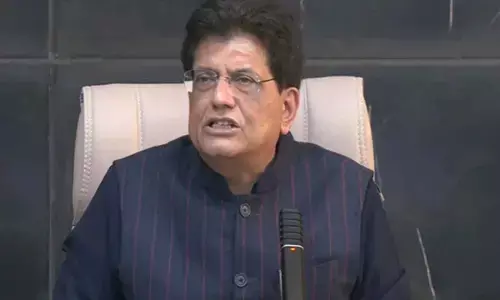2018, a year of great space exploration

2018 will go down as a significant milestone for mankind as far as science is concerned While the power brokers were busy with Prime Minister Narendra Modis omissions and commissions, the community that really matters to India, the scientists, were busy with the other M Mars In addition, fight against cancer saw definite progress Where does the protons mass come from always bothered a sec
2018 will go down as a significant milestone for mankind as far as science is concerned. While the power brokers were busy with Prime Minister Narendra Modi's omissions and commissions, the community that really matters to India, the scientists, were busy with the other 'M' - Mars. In addition, fight against cancer saw definite progress. Where does the proton's mass come from always bothered a section of them. And they found it out this year.
Gene editing is now to be celebrated as a breakthrough in human evolution. As the year ends, let us also muse over whether climate change really occurred or not. This was a busy year in space. We are not on Mars yet, but we are getting there. Several new space probes got their starts in 2018 while some met with disaster. There is a new planet hunter in town.
The Transiting Exoplanet Survey Satellite (TESS), launched on April 18, to search the nearest, brightest stars in the sky for signs of orbiting planets. TESS has already spotted two new worlds, one of which may be saturated with water. Then there was the Parker Solar Probe aiming for the Sun. Over the next seven years, it will swoop even closer to the Sun, eventually coming to within about 6 million kilometres of the solar surface and directly sampling the Sun's thin corona.
NASA's InSight touched down on Mars meanwhile. A trio of robots became the first to land on an asteroid. Japan's twin MINERVA-II rovers and Germany's MASCOT lander travelled to the asteroid Ryugu aboard Japan's Hayabusa2 spacecraft. Alas, the Kepler space telescope ran out of fuel just before November. The planet-hunting telescope was launched in 2009 to seek planets orbiting other stars. It succeeded spectacularly - discovering thousands of new worlds, some of which may have the right conditions for life and showing that planets outnumber stars in the Milky Way.
Within two days of the death of Kepler, NASA announced that Dawn had sent its first message showing that asteroid Vesta and the dwarf planet Ceres were two different worlds. There was a setback anyway when the veteran Mars rover Opportunity fell victim to a dust storm this spring, and mission managers fear it has roved its last. Cassiny, which was roaming around Saturn for long, had to be laid to rest, but the last bit of information it has sent will be studied for years occupying mankind for long. The decade of gene-editing was taken to the next level in the year just slipped by too. Coming to cancer, the liquid biopsy industry has exploded in 2018.
We should be able to diagnose cancer with a simple blood test in future. It was also discovered that most of the proton's 938 million electron volts of mass is due to complexities of quantum chromodynamics, or QCD, the theory which accounts for the churning of particles within the proton. Lattice QCD now can help understand nuclear physics better. See how much the mankind has achieved in one year! Forget politics. There are better things to do in life.















